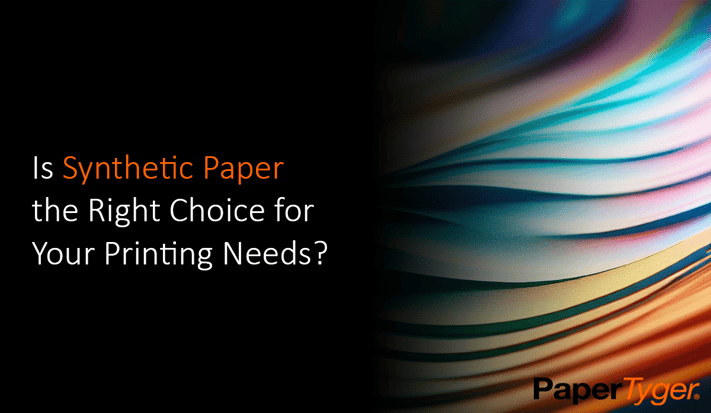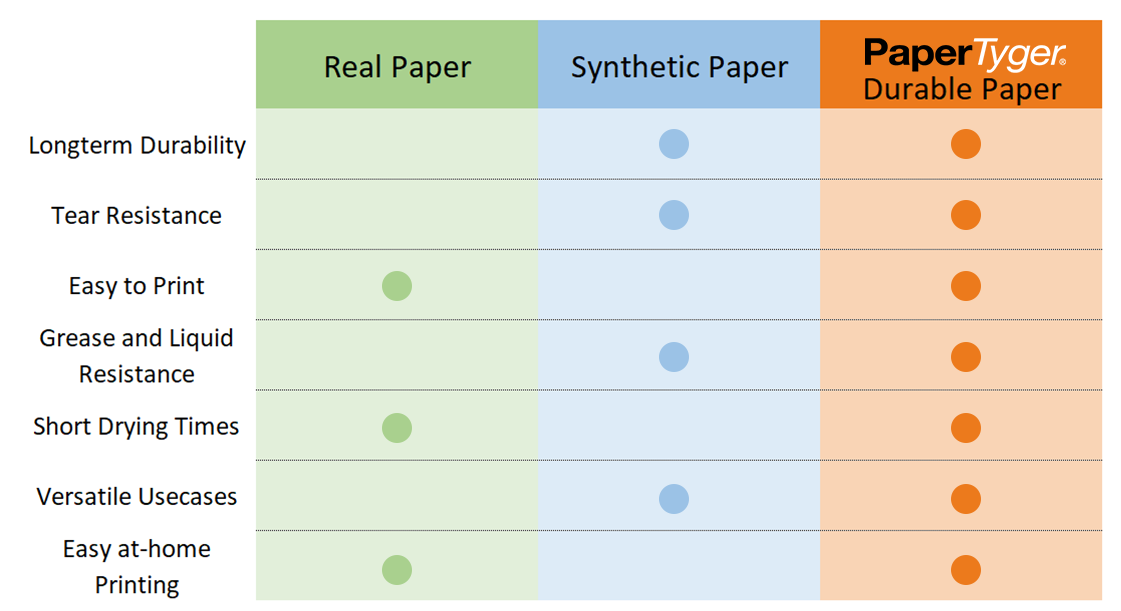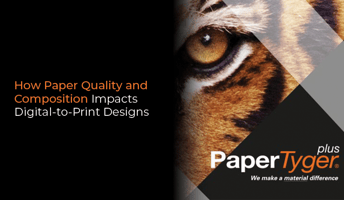You’ve just finished creating your incredible design and now it’s time to print it! As professional...
Is Synthetic Paper the Right Choice for Your Printing Needs?

There are many advantages to using durable, real paper instead of synthetic paper. Those that are familiar with the world of printing usually agree that synthetic paper presents challenges when it’s time to print.
Most specialty substrates are made up entirely of synthetic polymers, more commonly referred to as plastic. This impacts the way designs appear after being printed, the lengths of their drying times, and the cost and types of ink required. Real paper, on the other hand, presents its own challenges. The main disadvantage is the paper’s lack of durability, which is frustrating for those wanting to utilize its printing ease, quality, and cost-effectiveness.
Read on as PaperTyger explains the pros and cons of real vs synthetic paper - and why our durable paper is the best of both worlds!
Related Article: Does your application require resistance to tearing?
The Difference Between Real Paper and Synthetic Paper
Disadvantages of Synthetic Paper
Synthetic paper is a durable option for some projects. However, different specialty substrate types can present unexpected issues. Synthetic paper is most commonly made from polyethylene, which is the same type of plastic you’ll find in most traditional plastic products. Synthetic paper applications made with this type of synthetic polymer can be used for menus, signage, packaging, and more. Let’s look at some advantages and disadvantages of this product.
Overall, polyethylene provides increased tear resistance, scuff resistance, a heat-sealable surface, resistance against chemicals, grease resistance, and a good barrier against water and various gases. The plastic provides a heat-sealed barrier against the elements. However, synthetics have some key disadvantages.
- Lack of Printing Versatility: This paper type requires special printers and ink.
- Long drying times: Since synthetic papers are made with polymers, special inks must be used during printing. These inks take a long time to dry and as a result, the finished product is exposed to the elements for longer periods of time.
- UV Degradation: Does not usually protect against UV light and therefore ink fades over time.
Related Article: How Paper Material Impacts Print Quality
Disadvantages of Real, Organic Paper
Even though regular paper is very easy to print on without compromising a design, it has a few disadvantages depending on the desired application.
- Lack of durability: Real paper alone is simply not suitable for projects requiring durability. For example, applications such as signage or maps will not last long or be aesthetically pleasing if printed on regular paper.
- Lack of liquid resistance: Regular paper cannot be used outdoors as it is not very resistant to liquids. Exposure to liquid immediately causes paper to disintegrate.
- Tears easily: regular paper is very easily torn and as such, is not a good option if durability and longevity are required.
Regular paper is best when used for specific applications. It is a suitable product for everyday printing of standard documents that won’t be exposed to the elements for long periods of time. That’s why PaperTyger was created from real paper with an inner layer of film that provides superior durability and print quality on a real paper surface. That's why there's no better paper for printing on grease-resistant paper!
PaperTyger: the Best of Both
PaperTyger paper is the ideal choice to print designs on durable paper that doesn’t require long drying times, long-term exposure to harsh conditions, and more. How? PaperTyger uses a patented paper/film/paper construction, which provides a layer of strength to real paper that is comparable to synthetics. This means applications that are printed with PaperTyger products can avoid a timely manual lamination process as well as the hassle and expense of printing with synthetic paper.
Ultimately, PaperTyger converts like real paper and prints like real paper for one simple reason– it is real paper - yet with comparable durability to synthetic! Whereas synthetics typically require special inks, settings, and plates; and these papers have prolonged drying times. Meanwhile, PaperTyger paper is easy to print, cost-effective, and compatible with a range of printers. Our paper/film/paper design is a preferred choice for applications, including:
- Hang tags
- Menus
- Brochures and Catalogs
- Maps
- Wrapping paper
- Branded paper packaging and more
In essence, PaperTyger paper is perfect for anything that requires durability from the elements or excessive handling. This truly is the best of both worlds and certainly the best paper for quality printed design!
Want to learn more about the advantages of using real paper with PaperTyger? Follow us here.








